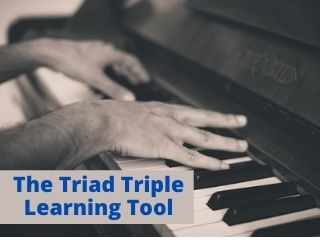The following two tabs change content below.


Greg Lee
Hi, my name is Greg Lee. I'm the creator of the Color Score Professional/Visual Chord Learning System. I love to share ideas and concepts about piano and keyboard playing in all styles of music. I believe the key to learning is having fun and making complicated things simple with visual tools and illustrations.
Latest posts by Greg Lee (see all)
- What is a minor/Major 7 Chord? - October 26, 2023
- 7 Chord Substitutions that Professionals Use - October 19, 2023
- 5 Simple Chord Tricks to Sound Amazing - October 5, 2023






 C Major Primary Chords
C Major Primary Chords


 C Major is the I chord.
C Major is the I chord.
 From there, we'll go to the IV chord but instead of root position, we'll play it in 2nd inversion. This is the smoothest transition to the IV chord.
From there, we'll go to the IV chord but instead of root position, we'll play it in 2nd inversion. This is the smoothest transition to the IV chord.
 We revert back to C Major before modulating to the next key in our cycle.
We revert back to C Major before modulating to the next key in our cycle.
 Now we play D flat major which is the I chord (the new key we've modulated to).
Now we play D flat major which is the I chord (the new key we've modulated to). Continuing the cycle, we go to the IV chord (G flat) in 2nd inversion.
Continuing the cycle, we go to the IV chord (G flat) in 2nd inversion. Then back to the V chord (A flat) in 1st inversion just as we did earlier.
Then back to the V chord (A flat) in 1st inversion just as we did earlier. This C is serving as a leading tone. A leading tone "leads" to a note one semitone away from another note. The result is a very smooth transition from one chord to another.
This C is serving as a leading tone. A leading tone "leads" to a note one semitone away from another note. The result is a very smooth transition from one chord to another. Then it's on to A flat major but again retaining the D flat in our left hand.
Then it's on to A flat major but again retaining the D flat in our left hand.
